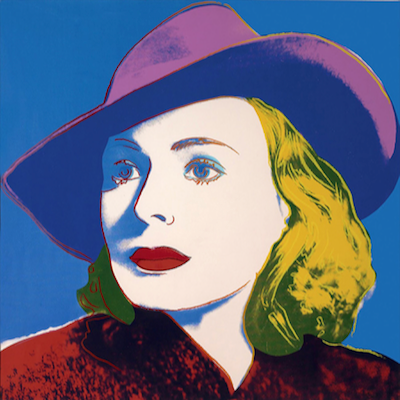
Details
Artist
Styles
Screenprint in colours with glitter and diamond dust, on wove paper - Signed and numbered in pencil - Published by CCA Galleries, London, with the publisher's blindstamp // Some of the Sources of Pop Art VI by Peter Blake is a limited edition screen-print from 2007, measuring 50.7 x 50.8 cm. The print, rich with color, glitter, and diamond dust, is a vibrant collage that celebrates iconic imagery synonymous with Pop Art and popular culture. It features references to classic symbols such as Elvis Presley, Coca-Cola, Mickey Mouse, and retro advertisements. Blake's arrangement nods to the roots of the Pop Art movement, which embraced mass media, consumerism, and the aesthetics of everyday life. The artwork, signed and numbered by the artist, encapsulates the nostalgic and bold spirit of Pop Art.
Some of the Sources of Pop Art VI, 2007
form
Medium
Size
50.7 x 50.8 cm
- Inches
- Centimeters
Edition
Price
- USD
- EUR
- GBP
Details
Artist
Styles
Screenprint in colours with glitter and diamond dust, on wove paper - Signed and numbered in pencil - Published by CCA Galleries, London, with the publisher's blindstamp // Some of the Sources of Pop Art VI by Peter Blake is a limited edition screen-print from 2007, measuring 50.7 x 50.8 cm. The print, rich with color, glitter, and diamond dust, is a vibrant collage that celebrates iconic imagery synonymous with Pop Art and popular culture. It features references to classic symbols such as Elvis Presley, Coca-Cola, Mickey Mouse, and retro advertisements. Blake's arrangement nods to the roots of the Pop Art movement, which embraced mass media, consumerism, and the aesthetics of everyday life. The artwork, signed and numbered by the artist, encapsulates the nostalgic and bold spirit of Pop Art.
- Recently Added
- Price (low-high )
- Price (high-low )
- Year (low-high )
- Year (high-low )
Peter Blake
Some Of The Sources Of Pop Art VII, 2007
Limited Edition Print
Silkscreen
GBP 9,000 - 12,000
What is pop-art?
Pop Art is an art movement that began in Britain in 1955 and in the late 1950s in the U.S. It challenged traditional fine arts by incorporating imagery from popular culture, such as news, advertising, and comic books. Pop Art often isolates and recontextualizes materials, combining them with unrelated elements. The movement is more about the attitudes and ideas that inspired it than the specific art itself. Pop Art is seen as a reaction against the dominant ideas of Abstract Expressionism, bringing everyday consumer culture into the realm of fine art.




















